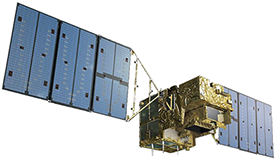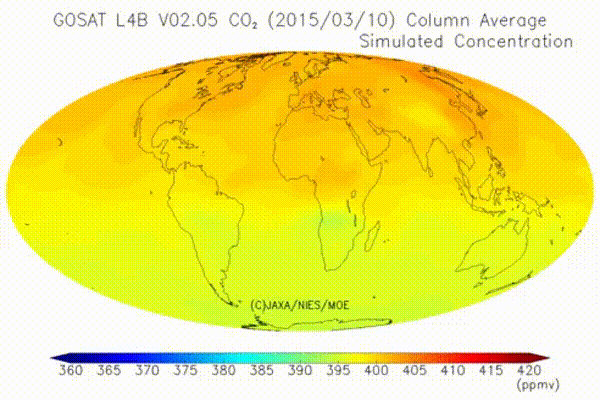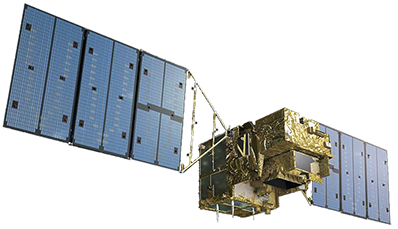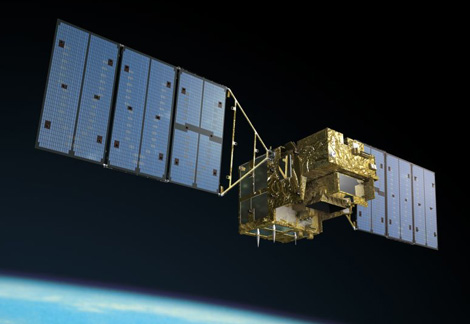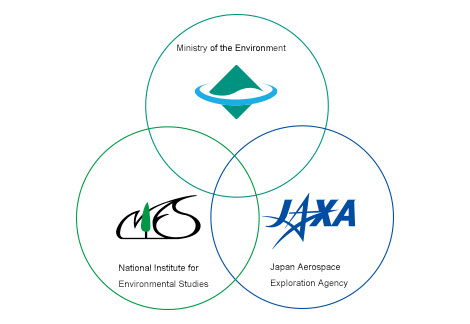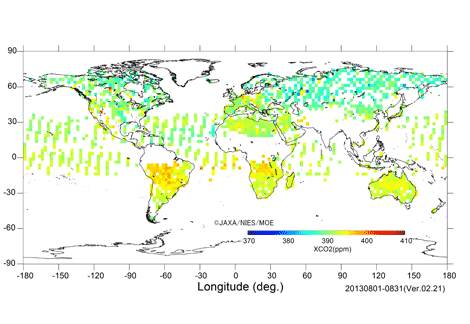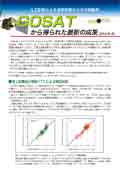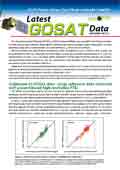
Learn the history of GOSAT project from NIES President, Dr. Sumi, expressing ever increasing expectations for observation by satellites.

The whole-atmosphere monthly mean concentration of carbon dioxide (CO2), calculated by using GOSAT data that reflect CO2 levels in all layers of the atmosphere.
Data and Products
The GOSAT observational data are routinely processed at the GOSAT Data Handling Facility, and the data products are distributed to general users.
Publications
We provide GOSAT Project pamphlets and leaflets available both in English and in Japanese for free download.
Welcome to GOSAT website
The Greenhouse Gases Observing Satellite "IBUKI" (GOSAT) is the world's first spacecraft to measure the concentrations of carbon dioxide and methane, the two major greenhouse gases, from space. The spacecraft was launched successfully on January 23, 2009, and has been operating properly since then.
Through analyzing the GOSAT observational data, scientists will be able to ascertain the global distribution of carbon dioxide (CO2) and methane (CH4), and how the sources and sinks of these gases vary with seasons, years, and locations. These new findings will enhance scientific understanding on the causes of global warming. Also, they will serve as fundamental information for improving climate change prediction and establishing sound plans for mitigating global warming. The GOSAT Project is a joint effort of the Ministry of the Environment (MOE), the National Institute for Environmental Studies (NIES), and the Japan Aerospace Exploration Agency (JAXA)

Privacy Policy | Link | Glossary
Copyright © National Institute for Environmental Studies. All Rights Reserved.
